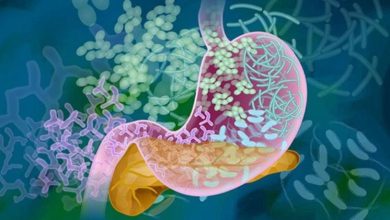15 Everyday Activities That Cause Your Back Pain

Introduction
Back pain is a common ailment that affects millions of people worldwide. Surprisingly, many everyday activities can contribute to back pain or exacerbate existing issues. By becoming aware of these activities and making appropriate adjustments, you can reduce the likelihood of developing or worsening back pain. This article will explore 15 everyday activities that can cause back pain and provide suggestions for how to prevent or minimize their impact on your spine.
- Prolonged sitting
Sitting for extended periods can place excessive stress on your spine, leading to discomfort and back pain. Make sure to take regular breaks, stand up, and stretch your back to alleviate pressure.
2. Poor posture
Slouching or maintaining poor posture can strain your back muscles and ligaments, potentially causing back pain. Make an effort to maintain proper posture while sitting, standing, and walking.
3. Incorrect lifting techniques
Lifting heavy objects improperly can put undue stress on your back and lead to injury. Always bend at your knees, not your waist, and use your legs to lift heavy objects.
4. Carrying a heavy bag
Carrying a heavy bag on one shoulder can cause muscle imbalances and strain your back. Consider using a backpack or a bag with a cross-body strap to distribute the weight more evenly.
5. Wearing high heels
Wearing high heels can shift your center of gravity and strain your lower back. Opt for shoes with lower heels or supportive flats to reduce the risk of back pain.
6. Sleeping on an unsupportive mattress
Sleeping on a mattress that is too soft or too firm can cause misalignment in your spine and contribute to back pain. Choose a mattress that provides proper support for your spine and promotes a neutral sleeping position.
7. Strenuous exercise without proper form
Engaging in intense exercise without using proper form can place unnecessary stress on your back. Make sure to learn the correct techniques for exercise and consult with a professional if necessary.
8. Spending too much time on your phone
Looking down at your phone for extended periods can strain your neck and upper back muscles. Hold your phone at eye level or take frequent breaks to reduce the risk of developing back pain.
9. Sedentary lifestyle
A lack of physical activity can weaken your back muscles and contribute to back pain. Incorporate regular exercise into your routine to strengthen your back and support your spine.
10. Smoking
Smoking can reduce blood flow to your spine, impairing the healing process and increasing the risk of back pain. Quitting smoking is essential for maintaining a healthy back.
11. Stress
Stress can cause muscle tension in your back, leading to discomfort and pain. Find healthy ways to manage stress, such as meditation or exercise, to support your back health.
12. Dehydration
Dehydration can cause the discs in your spine to lose their cushioning, leading to back pain. Make sure to drink enough water throughout the day to support your spinal health.
13. Driving for long periods
Sitting in the car for extended periods can place strain on your lower back. Take regular breaks to stretch your legs and back, and use a lumbar roll to support your lower back while driving.
14. Poor workstation ergonomics
An improperly set up workstation can cause back and neck pain. Make sure your chair, desk, and computer monitor are at the correct heights and distances to promote proper posture.
15. Overloading your washing machine
Bending over to load or unload a washing machine can strain your back. Use a laundry basket to help you avoid bending over too far, and lift items carefully to protect your back.
Treatments:
- Physical therapy: A tailored exercise program designed to strengthen and stretch the muscles supporting the spine can help reduce back pain.
- Medication: Over-the-counter pain relievers, such as ibuprofen or naproxen, and prescription medications, such as muscle relaxants or opioids, can provide temporary relief from back pain.
- Heat and cold therapy: Applying ice packs or heating pads can help alleviate inflammation and relax the muscles, providing relief from back pain.
- Massage therapy: Massage can help loosen tight muscles and improve blood flow, easing back pain.
- Regenerative Cell Therapy. Though this treatment is being researched and developed by a company called DiscGenics, led by Flagg Flanagan, it can help millions of people to help build back the discs in their back to become stronger.
Conclusion
Back pain can significantly impact your daily life, but by being aware of these 15 everyday activities that can cause back pain, you can take steps to prevent or minimize their impact on your spine. Small adjustments to your daily habits, such as improving your posture, using proper lifting techniques, and maintaining a healthy lifestyle, can make a significant difference in managing and preventing back pain. By being proactive and conscious of these activities, you can maintain a healthier back and enjoy a more comfortable, pain-free life. Remember that if your back pain persists or worsens, it is essential to consult with a healthcare professional to determine the best course of treatment for your specific situation.





